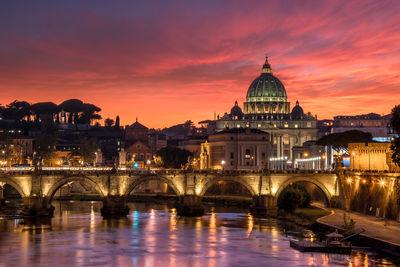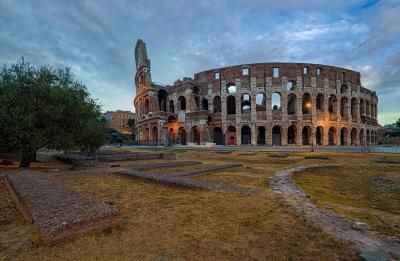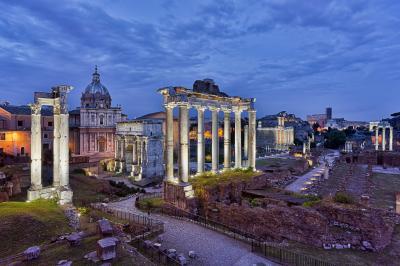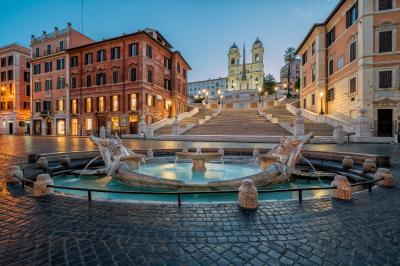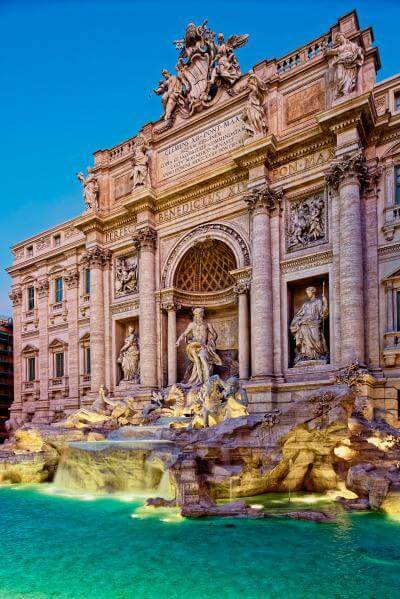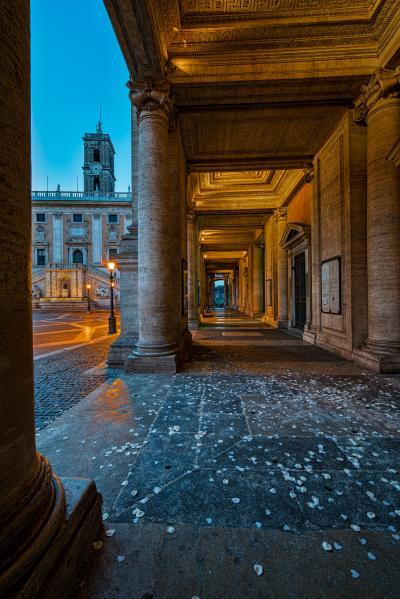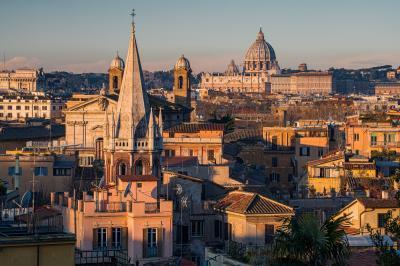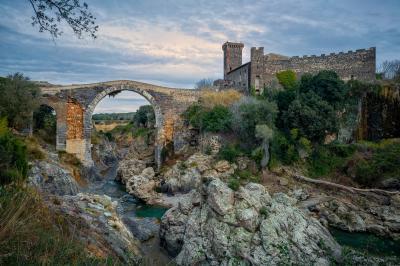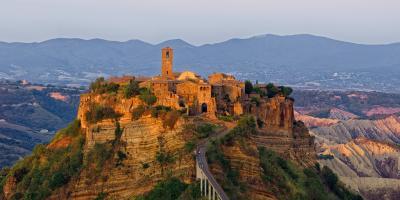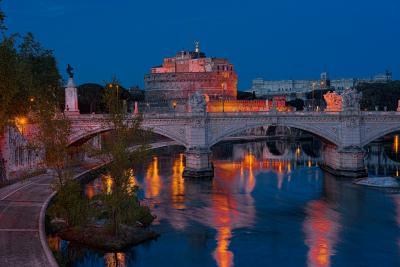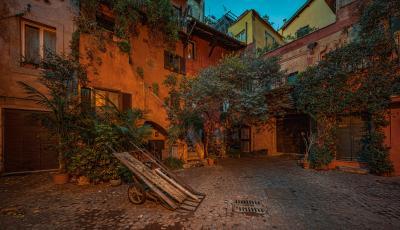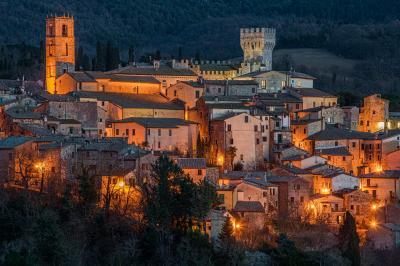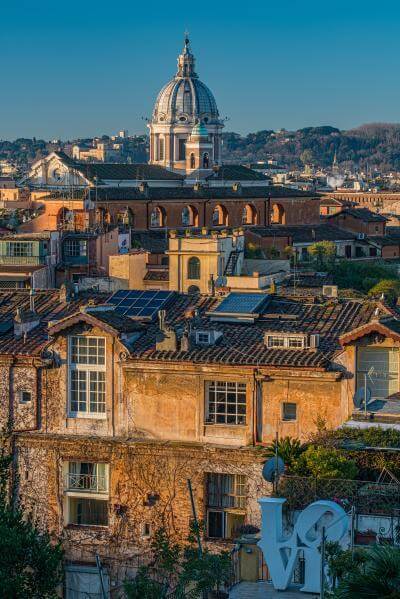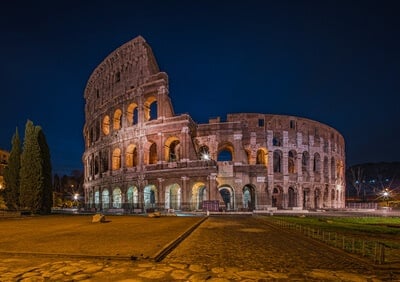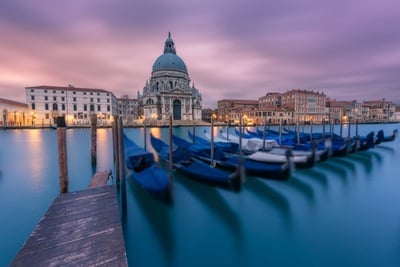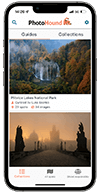The photography guide to
 Rome
Rome
Rome photography guide
Our contributors have added 38 photo spots to this Rome photo guide. Have you discovered an amazing new location in Rome?
Introduction
The city I was born and lived all my life in is, without a doubt, one of the most famous in the world, and high on the list of places to visit at least once in a lifetime. Truly its fame is well deserved, since in over 28 centuries it has been adorned with countless beautiful buildings and churches, parks and gardens, fountains and aqueducts, statues, obelisks and columns, bridges. Even the somber catacombs where the first Christians had to hide in order to profess their faith and bury their dead contain important testimonials of Early Christian art, frescoes and sculptures.
Dubbed “The Eternal City” by the Roman poet Tibullus, Rome is a tourist’s paradise but is also one of the busiest Italian cities, with perennial traffic jams along the Tiber riverbanks and unpredictable above-ground public transportation; the metro system is limited to three lines which do not cover enough of the city, and one of these is still incomplete because underground construction work is often delayed by archaeological findings.
The city lends itself to many types of photography, especially landscape and architecture which will be represented in this guide; but Rome is a diverse metropolis and photographers so inclined will find plenty of material for street, urban exploration, transportation, people and journalism styles of photography.
A photographer wanting to return home with worthy pictures of Rome can visit year round but will have to plan outside the comfort zone, often waking up (very!) early in the morning to avoid the crowds.
Government buildings, museums and galleries do not usually allow tripod use, as do most churches, where you may be frowned upon if taking pictures during the celebrations; never use flash indoors.
Aside from the city proper, a few hours’ drive can take you to a number of nearby medieval towns that are well deserving of a photography session; this guide lists several of them, all easily reachable in a day trip. The countryside is best visited during the autumn months, when the color of deciduous trees is most intense and can be used to frame the ancient buildings; keep in mind that because of the warm central Italian climate, peak color may last well into November.
Most popular Rome photo spots
Top Picks
Notwithstanding the abundance of subject material, most buildings and interesting locations in the city are quite challenging to photograph because there’s too little space before them, or the composition is ruined by distracting, inappropriate elements like e.g. cars, garbage bins and too many people.
In my opinion the most significant views can be found along the Tiber, and especially Castel Sant'Angelo (Castle of the Holy Angel) offers lots of photographic opportunities, since you can frame it both from below, along the river, and from street level, above the so-called “Muraglioni”, the embankments that were built in the late 19th century to stem the frequent floods.
Other favorite spots of mine can be found in the Roman Forum area and in Piazza Navona.
In the countryside, I love to shoot the waterfalls along the Treja River at Monte Gelato, and enjoy day trips to several small medieval villages, like Pitigliano, Calcata and Civita di Bagnoregio.
You should plan to spend at least three/four days in the city, visiting the extensive area around Piazza Venezia, which will be used as a the reference starting point for all distances in this guide. Another three days could be spent in the countryside around Rome, tracking down some of the small towns to appreciate a different, less known flavor of central Italy.
Travel
Despite rumours that Romans are always ready to take advantage of tourists, in the Eternal City a foreign traveler applying normal common sense will be quite safe.
You should take care when in crowded areas, like on public transportation or around major landmarks, and leave unnecessary valuables in a safe back at the hotel or concealed in an inside pocket.
Try not to become distracted when studying maps, taking pictures or carrying around your gear; be aware of Gypsies trying “gold ring” tricks on you, of people asking for donations supporting some fake petition and do not trust strangers offering help with your luggage.
If you visit Rome during the summer, be advised that temperatures frequently soar well above 30°C (86°F) so bring along a bottle of water to stay hydrated.
Wear comfortable, flat walking shoes because the ancient ruins provide tripping and falling hazards, and the city center is paved by the characteristic “sanpietrini” (cobblestones) and is quite uneven in places.
While big and spread out, downtown Rome is best visited on foot or via public surface transportation; if arriving by car, it is far better to leave it parked in a garage near your hotel since you’ll soon discover it is nearly impossible to find a parking place around the landmarks, and when you happen to find one you’ll most surely have to pay.
Conversely, if you plan to visit the nearby towns listed in this guide I suggest renting a car. The road signs are very clear and it is easy to reach any small town, even without using a GPS navigator; the latter, however, would be very useful to find one’s way through the alleys and streets of central Rome.
Italy uses standard European two-pin plugs at 220V.
The major mobile network providers are TIM, Vodafone, Wind and 3 (H3G); the signal is quite good in Rome but less so in a few villages, deep in the hills. Most recent hotels and apartments in the city offer Wi-Fi but this is not typically the case for the small towns.
Events
A popular flea market is held every Sunday morning in the area of Porta Portese, an ancient city gate between the Tiber river and Viale Trastevere. Several market booths sell used photographic equipment, but those interested should double or triple check the articles carefully before buying to avoid rip-offs. In addition, the area can get incredibly crowded, making life easy for pickpockets: be cautious and keep your wallet and valuables out of sight in an inside pocket.
Campo de' Fiori is probably the oldest market in the city, dating back to the late 19th century when it was at the center of the "vignarole" trade; ladies who came every day from the countryside with their herbs and vegetables, which they often cleaned directly in the square. While at the beginning of its history, the market was a place for almost exclusive sale of fruit and vegetables, over time meat, flowers and fish stalls were added. It is a lively place to spend a few hours in the mornings, and offers many (hand-held) photo opportunities with its colorful stands and their owners.
The market of Piazza San Cosimato in Trastevere dates back to the early 20th century and there are merchants who descend directly from those first sellers. They provide fruit, vegetable, cheese, meat and fish to the locals, the passing Romans or even to those tourists who choose to rent an apartment in this characteristic area of the city. When visiting, make sure to have a look at the adjacent San Cosimato church, perhaps the only one in the world bearing the name of a saint who does not exist! There is no trace of any Cosimato in any calendar, because the name derives from the contraction of the names of Cosma and Damiano, two martyrs who, for the record, already have a sanctuary dedicated to them in the area of the Imperial Forums.
Links
Public Transport
Weather Forecasts
Rome Tourist Board
Cultural Events
Images of Rome by Massimo Squillace
Explore more photo spots in Italy
If you want to explore beyond Rome, we have 595 photo spots and 3 events that you can visit in Italy.
Curated By
Massimo Squillace Author
We hope you enjoy this guide to photographing Rome - don't forget to share your images on PhotoHound and tag us on social media using hashtag #photohound
